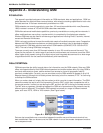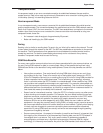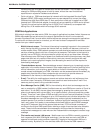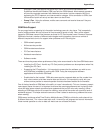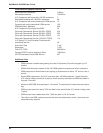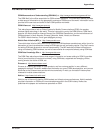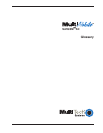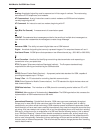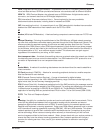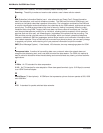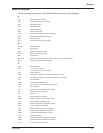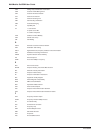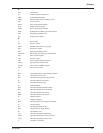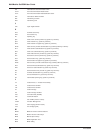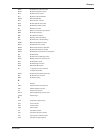
MultiMobile SoftGSM User Guide
MTSGSM
68
A
Analog: A method of signalling used to represent an infinite range of numbers. The most analog
devices are POTS telephones, and modems.
AT Command set: A set of instructions used to control modems and ISDN terminal adapters,
normally beginning with AT.
AT Command: An instruction sent to a modem, beginning with AT.
B
bps (Bits Per Second): A measurement of transmission speed.
C
CONCAT: Concatenated short messages provide for the sending of multiple short messages to a
user who can then reassemble the messages to create a large message
D
Data over GSM: The ability to transmit digital data over a GSM network.
Digital: A method of signalling that can only represent integers. For computers these are 0 and 1.
Dual-band Phone: A GSM phone that operates on two different bands (e.g., 900/1800 or 900/1900).
E
Error Correction: A method for identifying errors during data transmission and requesting re-
transmission of any corrupted data.
ETSI (European Telecommunications Standards Institute): The European standards body
responsible for defining and maintaining the GSM standard.
G
GPRS (General Packet Radio Services): A proposed packet data standard for GSM, capable of
providing data speeds up to 170 Kbps.
Group 3 Fax: An ITU standard for controlling facsimile communication.
GSM (Global System for Mobile Communication): An ETSI standard for digital wireless voice and
data communications.
GSM Data Interface: The interface on a GSM phone for connecting a serial cable to a PC or PC
Card.
GSM MoU (Memorandum of Understanding) Association: The GSM organization that oversees the
implementation of GSM networks around the world.
I
International Roaming: Outside North America, GSM users can roam seamlessly throughout
Europe, and in more than 60 other countries around the world. This provides a level of mobility
unmatched by any other cellular technology. GSM networks operate at different frequencies outside
North America, and as a result users roaming internationally may need to change the phone that they
are using. All a user needs to do is simply hire or buy the appropriate phone, and insert their existing
SIM card in to the phone (for an explanation of a SIM card see the following section), this is refered
to as “SIM Card Roaming”. Users will then be able to make and receive calls, as they would using
their normal phone. Many network operators now operate hiring schemes for their subscribers who
wish to roam internationally. Advances in phone technology will soon see the availability of phones
that can work on different frequencies. This will eliminate the need to change phones when travelling
outside North America.



